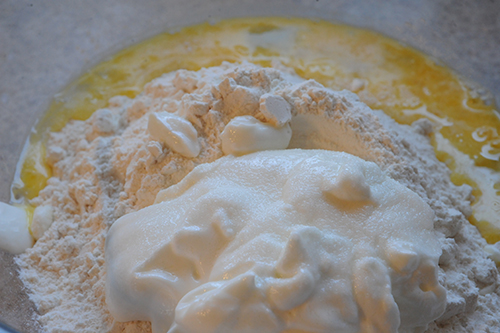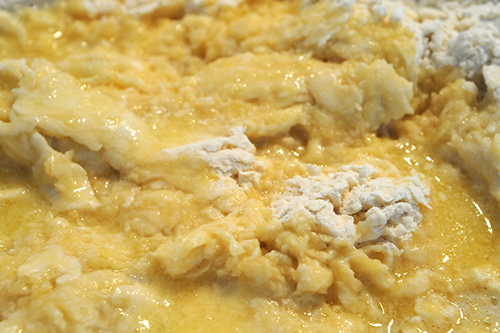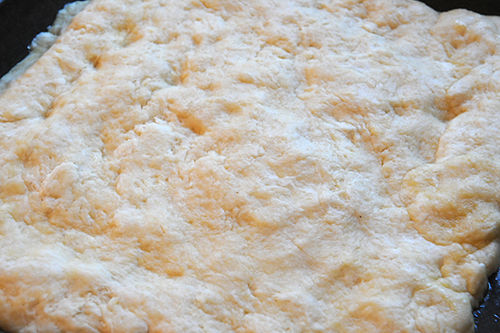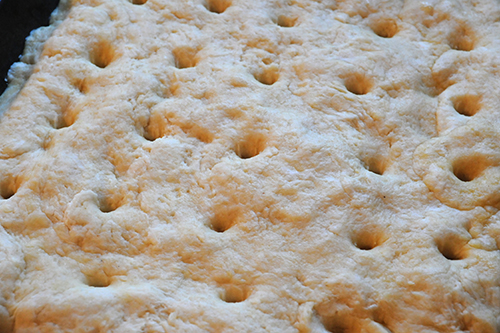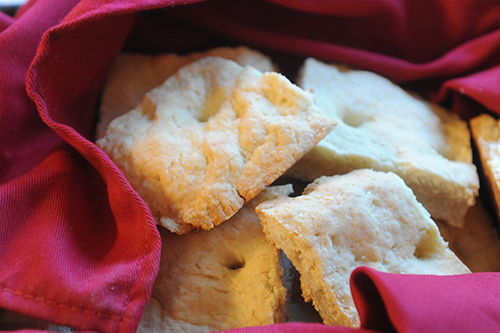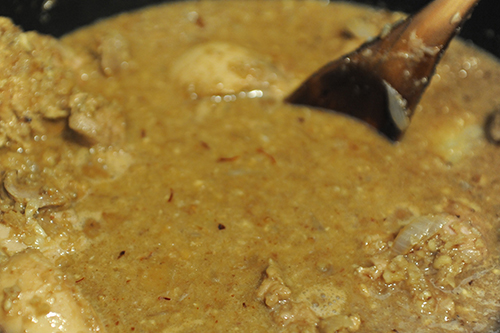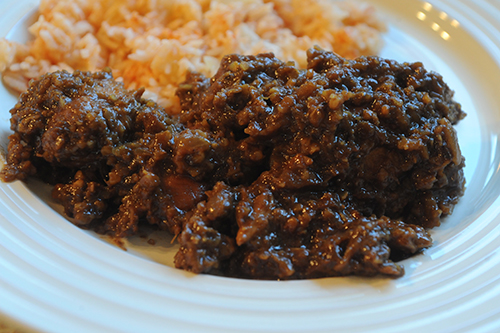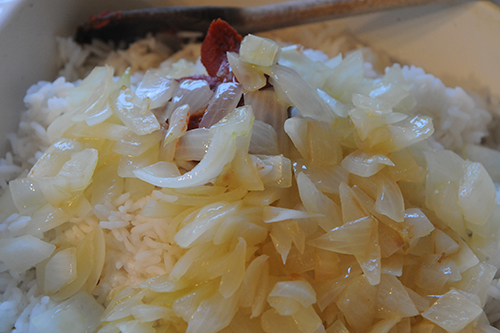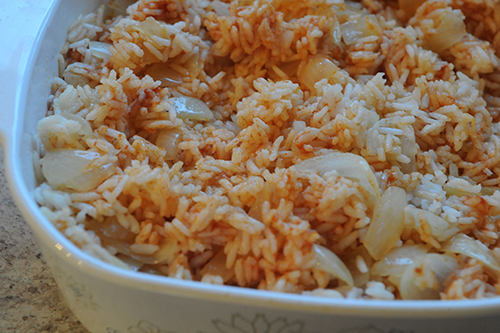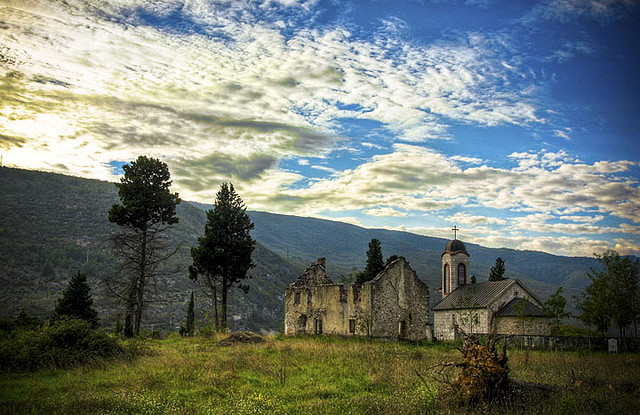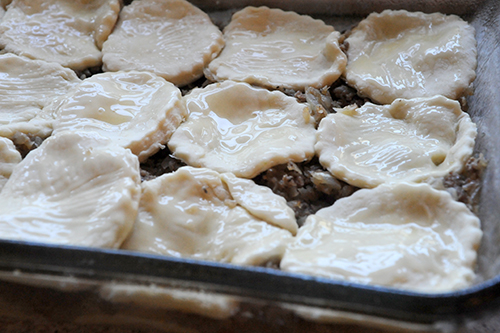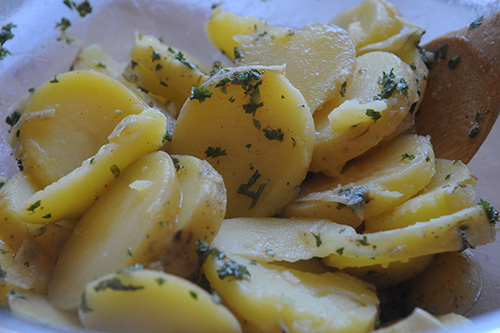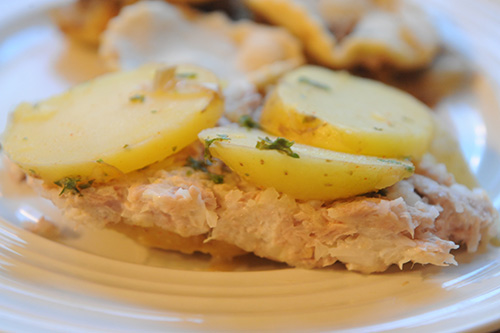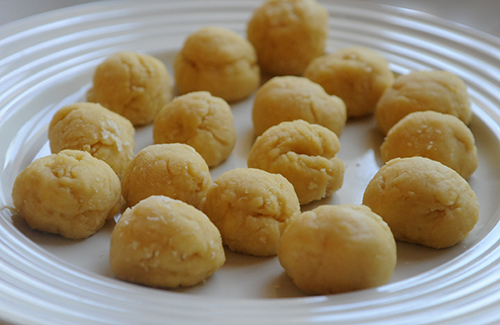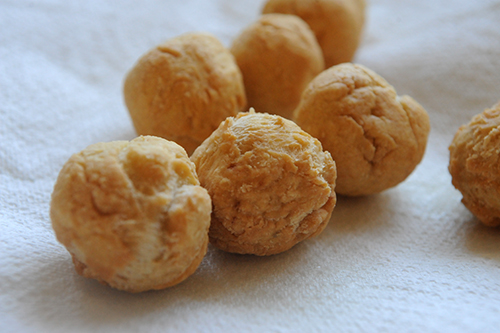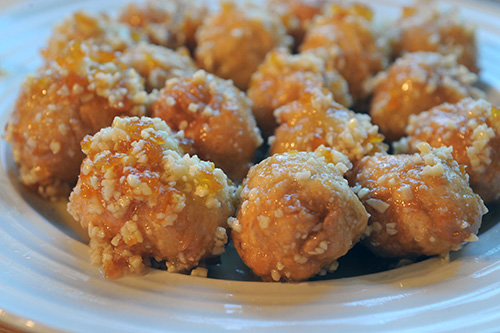So, the cooking part of this blog is currently about three weeks ahead
of the blog posts. Which is usually not a problem, but a few minutes ago
when I went to start writing this entry and I looked back at
the list I went,
"Wait, did I do Kosovo?"
I had to rack my brain and I still couldn't remember doing Kosovo. Which
is really telling because I spend literally hours in the kitchen every
week doing these meals, so for me to completely forget one either means
that A) I am losing it or B) it was really, really, not very memorable.
I am going with B, even though you're all out there nodding your heads
going, "Yeah, it's totally A."
Kosovo. Land of mountains and some other stuff. Damn, I just pissed off
a bunch of people in Kosovo. Forgive me, for I am an American, and I get
all of my information from the Internet. Kosovo is not one of those
countries that makes the news, at least not since 1999 when its Albanian
and Serbian populations decided to start killing each other. Fortunately
NATO put an end to all of that before the end of that same year, after
which they put the whole region under transitional UN administration. In
2008, Kosovo declared independence from Serbia, much to Serbia's chagrin
(Serbia still doesn't recognize Kosovo as an independent state). So now
Kosovo is a very tiny, very independent country all of its own, complete
with food so unmemorable that no one ever talks about it on the internet.
 |
|
It's Eastern European food, which, I don't know. I like some Eastern
European food. Who doesn't enjoy a good goulash? But in my (limited)
experience, Eastern European food is very heavy and very simple, both
qualities I don't really love in a meal. So everything I could find was simple and, yes, dull, and I guess I must have been cooking it in
my sleep or something.
Anyway here is the menu:
Mantia Dibrane
Oh yeah, now I remember.
(from
Kosova Sot)
- 8 cups flour
- 2 cups lukewarm water
- 2 tbsp oil
- Salt to taste
- 1 1/3 lbs minced meat
- 3 large onions
- Salt, oil and black pepper
Pastiço (spicy potato oven)
(from
njoftime.co)
- 1 pound of boiled potatoes
- Juice of two lemons
- 2 tbsp parsley, minced
- salt and olive oil
- cayenne pepper
- 1 onion
- 7 oz tuna
- a spoonful of mayonnaise
Kurore
(from
The Apricity)
- 3 eggs
- Sunflower oil
- 2 tbsp of brandy
- Zest of 1 lemon
- 2 1/2 cups plain flour
- 2 oz dried fruit, chopped fine
- 1 cup ground almonds
- 1 1/2 cups honey
OK, let's do the Mantia Dibrane and get that out of the way, because
it's the most traumatic part of the meal. So here's what's going to
happen. I am going to post about my experience with this recipe. And
then someone from Kosovo is going to come along and say, "You've ruined
the good name of Kosovan food! And you didn't even spell "Kosovar"
right! You should learn to speak the language, and also I would never
serve Mantia Dibrane and Pastiço in the same meal!" That's what will
happen. That's what always happens when I get something wrong. And I got
this terribly, terribly wrong. But I'm blaming it on Google Translate
and also the fact that, seriously, that's the recipe?
Because look at the recipe: flour, water, oil and a little bit of salt.
There's nothing in that dough recipe to actually make the dough rise or
even just puff up a little. It's a recipe for effing Play Dough. Have you
ever tried to bake Play Dough? Then you know what happens.
And it just gets worse from there. I know I am always complaining about
Google Translate, but just for kicks I'm going to tell you exactly what
Google translate told me to do with this recipe. Are you ready? Here it is:
"In the tray table or thrown flour, lukewarm water, oil, salt and mix,
made from pulp forming 30 small cakes. Each cake augmented by depleting
as licking the hand. Kuleçtë coated with butter and join tenner. Each
tëhollohet tenner in a huge lump and the three layers together in a
single lump. PETA divided into squares chess. For fillings squares
needed mince, onion, chopped fine, salt and black pepper. Measures
prepared in oil and fry the bottom of the rash of little red pepper
thrown for color. Measures should be left to cool and then fill the
boxes with previously prepared. Each square is rolled diagonally from
the four sides (such as envelopes) and put into baking pan to be baked.
Mantia baked half an hour. Once ripe covered with a napkin for 10
minutes. Served with yogurt."
OK so first of all, "augmented by depleting as licking the hand." No
matter how many times I turned that one over in my head I did not come
out any wiser. I sure as hell wasn't going to be licking my hand, I can
tell you that much. "Kuleçtë," and "tëhollohet" are typical missed words
like you would see in any Google translation, though I don't know what
the hell "join tenner" is supposed to mean. And where the People for the
Ethical Treatment of Animals comes into this, I have no idea.
So armed with these explicit details I set out to make Mantia Dibrane.
First, I mixed together the Play Dough ingredients. Then I fried up the
mincemeat with onions, salt and pepper and nothing else, because god
forbid there should be any actual flavor in there or anything.
Then I
rolled out the dough and cut it into squares about the size of chess
pieces, which is one of the few instructions I actually gleaned from
that mess Google Translate gave me. I also saw that bit about red pepper
"for color" and figured I could add a little paprika. At this point I
stopped caring because I could see all the way to the end of this
terrible road, so instead of trying to bundle up the meat in little
packets I just put half the squares down in a greased casserole and then
spread the meat over that, then I put down the rest of the squares.
Then
I baked the whole mess for 30 minutes.
 |
| Seriously? |
So there's your answer. I couldn't remember Kosovo because I actually
blocked it out of my traumatized brain.
So meanwhile make the potatoes, which weren't actually so bad. First
parboil them until they are just tender, then let them cool down. Slice
them and mix with lemon juice, parsley salt and a minced chili pepper (I
read that as ground cayenne, which is the only sort of cayenne we get here, so
instead of a minced chili I just used powder).
Now transfer half of the
potatoes to a glass serving dish, and then spread the tuna over the top
of that.
Now add the rest of the potatoes and transfer to the fridge to
chill.
Did you notice the part where there wasn't any oven involved, even
though "oven" is in the (translated) name? Me too.
Now for the dessert. First beat the eggs with the oil, brandy and lemon
rind. Now add the flour bit by bit until you get a soft dough. Divide
into 32 pieces and roll each piece into a small ball.
Heat about two inches of oil in a pan until bubbles rise around the
non-stirring end of a wooden spoon. Drop the balls in and let them fry
until golden on all sides. Remove and drain on paper towels.
Now mix the fruit with the almonds and honey. Cook over medium heat
until the mixture thickens a little, then drop in the fried balls. Roll
them around so that they are completely covered with the honey mixture,
then remove and let sit for 10 minutes before serving.
So what do you think happened to the Play Dough? You're right! Solid
rock. It was completely inedible, at least I thought so. Martin ate it.
He said the biscuit type stuff was like dumplings. Yeah, like petrified,
100 year old dumplings. Awesome. Oh and the meat had no flavor, like I
didn't know that was going to happen.
This was clearly a translation failure combined with a recipe that
probably had missing ingredients. My suspicion is confirmed when you
look at the photo that went with the original recipe: that's clearly a
yeast bread. With a few more seasonings and a bread that actually had
some sort of leavening agent, this would have been a completely
different experience. But I can only critique the recipe I actually
made, and I was faithful to it. In all its awfulness.
I did like that potato salad though. I have no idea why it was an "oven"
anything, but it was pretty good. I ate the leftovers for a couple of
days, and that's always an indication.
The dessert was OK. It smelled divine, but the balls themselves were
kind of chewy and not very nice in texture. Again, nothing went into the
dough to stop them from being stodgy, and I don't really like stodgy.
But it was OK. It's not like we threw any of them out.
So yeah, that's Kosovo. If you are from there, I welcome your comments.
But please, don't just drop in here and curse my name and then fly off
again. I want to know what the right recipe is, or I want a better one.
I am always happy to do over, and if there was ever a better candidate
... well ...
Next week: Kurdistan
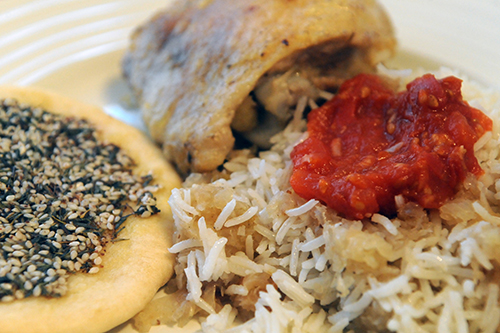



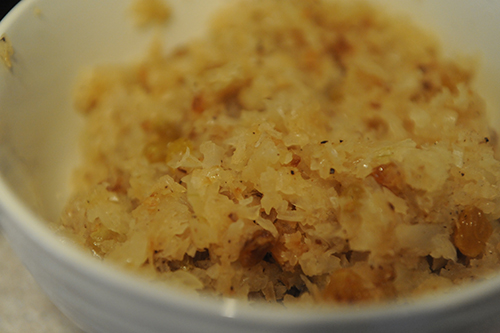
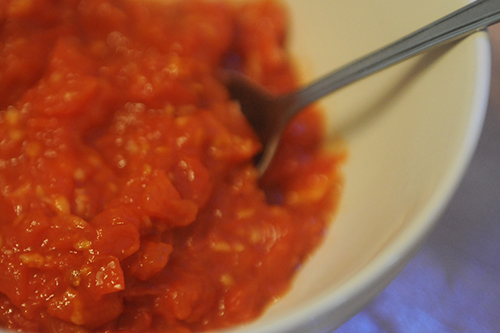

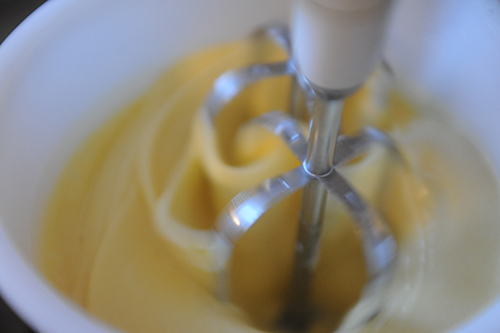
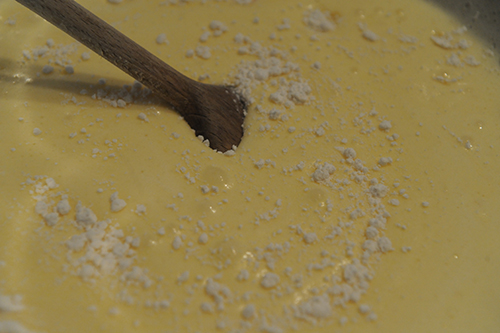
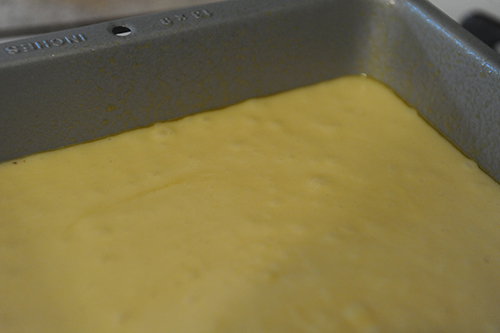
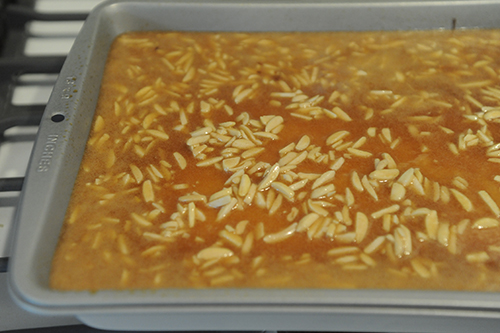













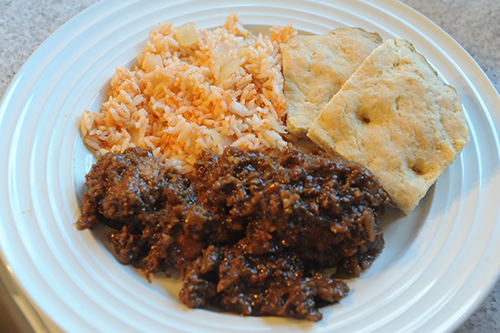
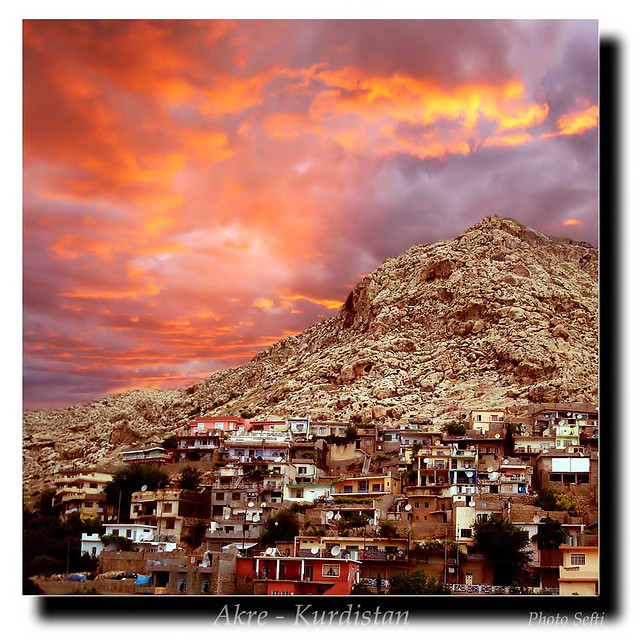
.jpg/800px-Kurdish-inhabited_area_by_CIA_(1992).jpg)
